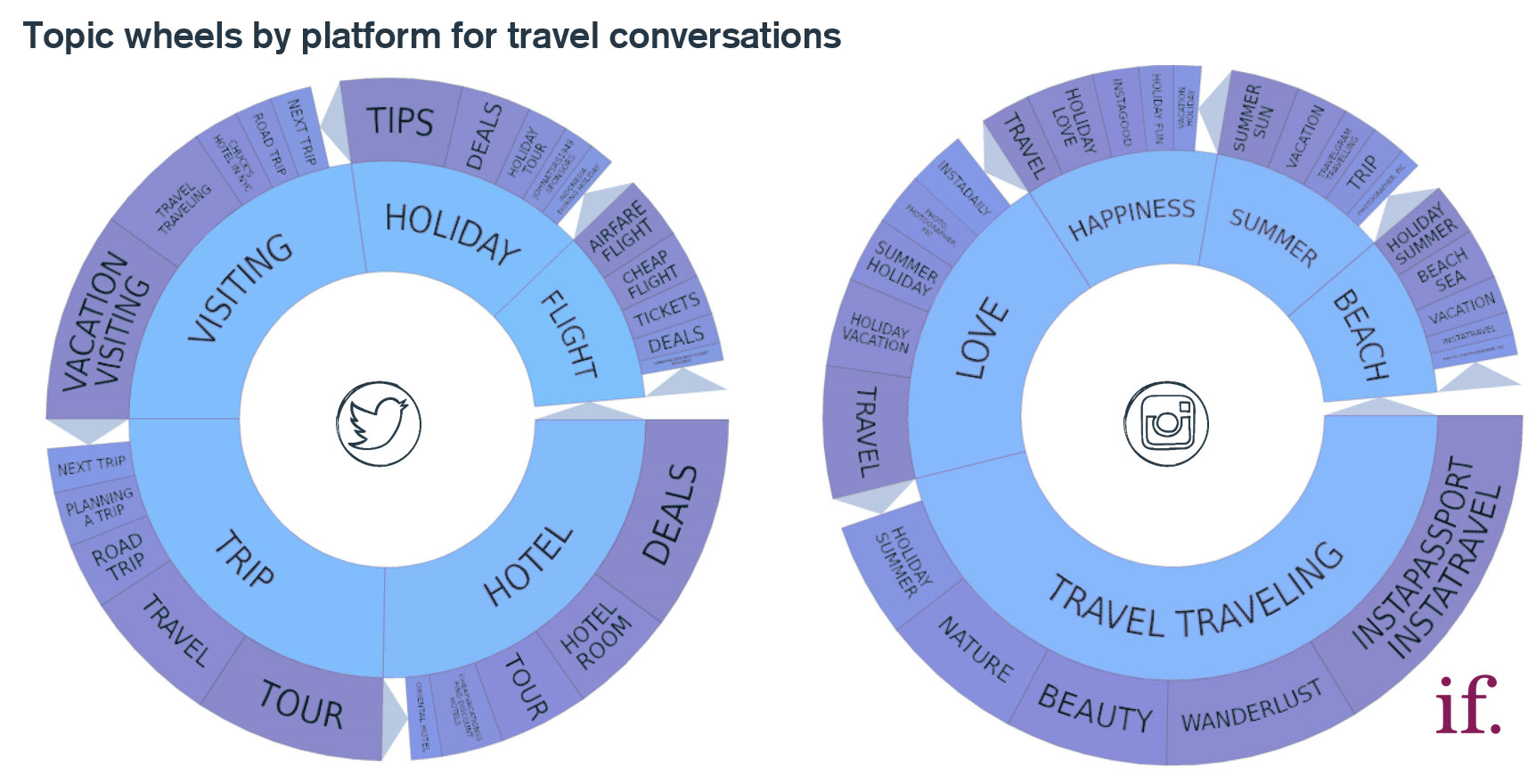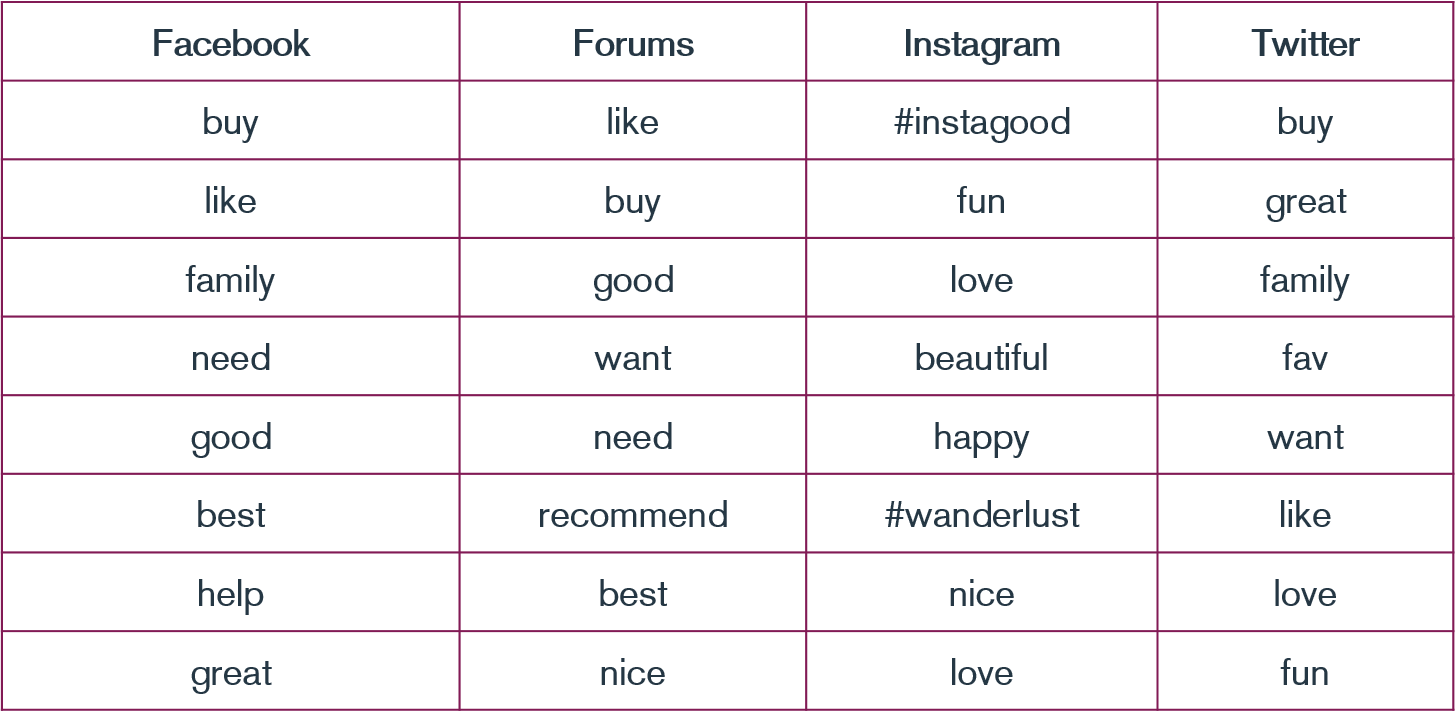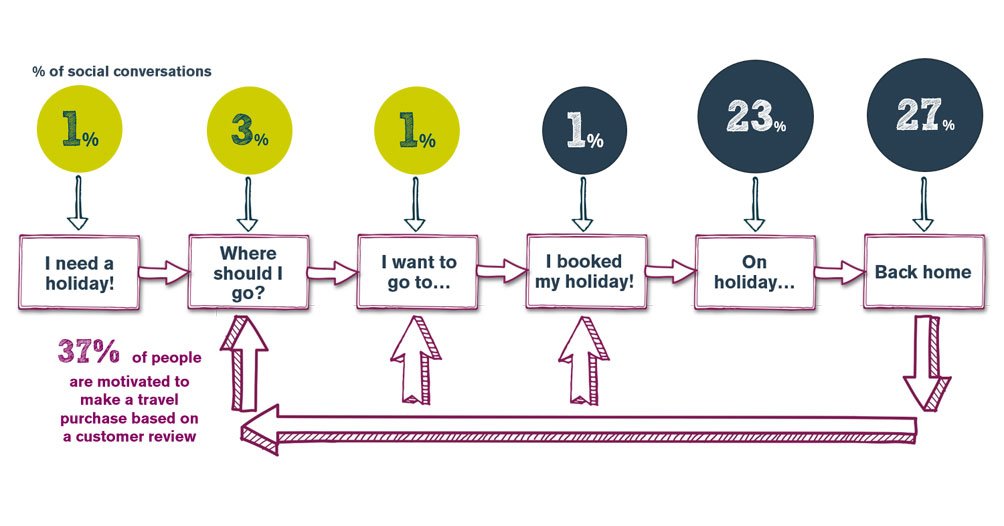April 28, 2016
What! Yup. If you have just one social strategy then you may as well consign it to the dustbin. Social is now too sophisticated for one strategy with a social channel (platform) agnostic approach.
Every social network now has different audiences, varying behaviours and whole swathes of content formats that don’t always fit together. They can no longer be treated the same. One approach will not fit all. Not if you want results.
Sure you need to ensure the customer experience is joined up. Look and feel cannot be too much of a brand departure. Messages must cascade and flow through the networks. All true. But your approach, your strategy for each channel is going to be different.
I am following up on some research I did last year in the Travel industry. It lets me demonstrate with a little more insight some of the key reasons that one strategy in social is not enough.
- Let’s start with the basics
Even before we get into the juicy behavioural insights by platform the demographics can tell a story. Looking at over 4m travel conversations (including holiday, travel, flights hotels etc), we can take a dig deeper into the different channels by gender.
Instagram and Twitter are more female when it comes to this topic. Facebook is pretty even girl/ boy, and Forums appear to be mostly men. There are behavioural, language and content differences. Drilling into these helps you understand the variable content approaches and expected outcomes.
- Your customers’ intention by platform
Consumers do differentiate by interests on each platform. Take a look at the topic wheels below. The one for Twitter is very in the moment. Customer service questions, holiday planning and statements that the tweeter is on holiday
Instagram is breathless, excitable and rammed full of adjectives and adverbs. All with the necessary hashtag. Mirroring the topics, interests and tone of each platform produces better results.
- Language and voice
Going beyond consumer intentions by platform, you can unpick the language to look at the more emotive words. A peek at the top 10 most used words on travel by platforms demonstrates some key variances. Please note that this is top line travel data. A more detailed analysis would reveal even greater differentiation.
More detailed analysis paints a picture of your particular customer base. But even this quick view reveals the channels where family conversations happen, where there is a positive splash of happy emotions and where there is practical discourse on travelling.
- Creative opportunities are not just a matter of format
Of course the content formats vary across the channels. We have live video on Facebook, and Periscope on Twitter. Gifs are thumb-stopping in Twitter, but don’t render on LinkedIn. And cinemagraphs seem to shine on Facebook. What is interesting however, is that it isn’t just the formats. It is the content itself that differs.
Instagram has many more artistic and scenic led travel pictures (with a healthy dose of selfies like Twitter), but the user content on Facebook changes to one of a more family and friends nature. People matter on Facebook.
When it comes to travel there are definite image and visual themes depending on the channel.
- Where in the journey
As we discussed in the last travel report (free to download) if you train the conversations to a customer journey in a monitoring tool, then you also understand where the consumer is in the journey.
Here we see a view across all the social channels. It demonstrates the big spike in conversations during and after the travel experience. But this journey is definitely not the same across each platform. You need a journey for each channel. Understand this nuance. Plan for it. And you will have a clear understanding of the opportunity to drive business value
Different yet aligned metrics
Whether you have one strategy or ten (hopefully not 10), you still need to demonstrate value. So like your overarching strategy you still need to tie back all metrics to business goals. However the metrics and KPIs will vary by platform. Firstly, you need to understand what outcome each channel will deliver. The outcomes will be different. Your customers are on a different part of the purchase journey depending on the channel and this impacts the goals you set.
Secondly, the different platforms have different ways of being measured. And they don’t always align. It needs planning to make sure you are not just measuring vanity metrics, or worse still, trying to measure everything!
Why would you bother with all this insight?
There is a simple truth to social media marketing. Relevance at scale delivers results.
Consumers don’t want you to keep firing any old bit of content at them. They want it to be personal. The advertising mechanics on social platforms actively reward you for relevance. Why? Because they don’t want to bother users with useless posts and tweets. Everything on social media is about personalisation, relevancy, resonance and of course, reach.
It is relevancy at scale that delivers reach, engagement, growth and most importantly, moves consumers to customers. One plan, one strategy is not enough – you get results only if you are serious enough about social media to have clear channel strategies.
*all research was conducted on crimson hexagon across 2 years and includes only platforms and profiles that are public.



